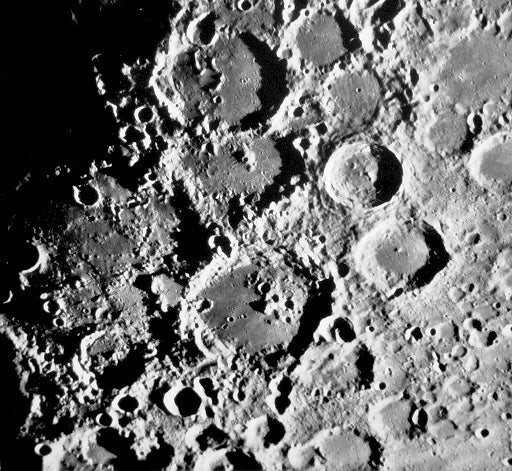Asteroids, not comets, bombarded the inner solar system 3.9 billion years ago, according to a recent scientific study. Robert Strom of the Lunar and Planetary Laboratory (LPL) at the University of Arizona at Tucson and his team concluded that this bombardment of asteroids lasted between 20 and 150 million years. The study resolves two ongoing debates: What formed the craters found on inner solar system bodies? And, when did they form?
The inner solar system — Mercury, Venus, Earth, and Mars — presents two types of cratered surfaces. Earth’s Moon provides examples of both: maria (dark plains), and rugged highlands. The highlands show the effects of the initial bombardment. The maria record a later, longer epoch that extends to the present. Mercury and Mars also show both surface types. Tectonic processes on Venus and Earth have obliterated features from the initial heavy bombardment, but Venus retains a record of the later epoch that’s consistent with Mars, Mercury, and the Moon.
“The connection we made has to do with the size distribution of asteroids,” Malhotra says. “The population of main-belt asteroids matches the complex, densely cratered surfaces almost perfectly.” The cratering record for the first bombardment fits an asteroid source far better than a cometary one.
Additionally, says Malhotra, “the distribution of near-Earth asteroids [NEAs] matches the younger surfaces beautifully.” So NEAs are the culprits in the later impact wave. While NEAs also come from the main asteroid belt, their impact rate amounts to a gradual rain of rock compared to the initial heavy bombardment.
The researchers have proposed two options for a time line. In the first option, the initial bombardment occurs at the end of the solar system’s accretion. The second suggests a quiescent period after solar system accretion, followed by a spike in impacts.
“To match the results we see, we conclude that there must have been a spike. The event must have happened fairly quickly, due to a major dynamic instability in the asteroid belt,” Malhotra explains.
What triggered that instability remains a mystery, but the LPL researchers believe they have found answers to two fundamental questions of our solar system’s history.










